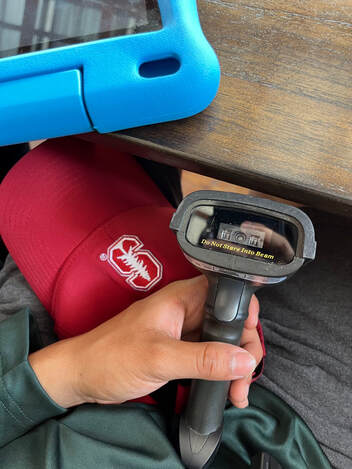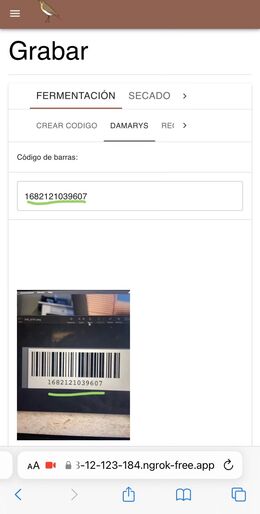|
Zorzal Cacao is a cacao producer based in the Dominican Republic that employs sustainable practices, such as habitat conservation, in order to ensure environmentally friendly and efficient cacao farming. Our web app was created to help Zorzal Cacao sustain these efforts, as the web app helps them accurately and efficiently track their cacao production process. Over the past several years, the web app has been constructed to do just that in a mobile-friendly format, allowing the Zorzal employees to track and log the cacao production on their mobile phones. More recently, we’ve developed changes to the UI and new features such as one that automatically exports a spreadsheet of their database. In the last month, we visited Zorzal in the Dominican Republic to be on the ground and learn more about their day-to-day operations. Our many meetings with Zorzal employees helped inform our next steps and priorities this quarter. During these meetings, we discovered that, Zorzal has been utilizing paper instead of using our web app’s forms, Zorzal employees have been using GoCanvas, a form software that provides two key features our web-app lacked: 1) the ability to export filled-out forms as PDFs, and 2) the ability to upload photos. These features have now been added onto our web-app. We’ve built a basic form-to-PDF export feature that we will expand on further. We also identified and revamped existing code from previous teams to successfully implement a photo upload feature in our forms. As these were the main reasons Zorzal employees chose to use GoCanvas instead of our web-app, we anticipate that, once these features are completed, they will provide Zorzal employees with a smooth transition back to using our web-application in their workflow. Another barrier to Zorzal’s full use of our web-app was difficulty in scanning barcodes. Previous teams provided Zorzal with a tablet and a physical barcode scanner. However, these two additional components introduced several issues. First, as there is only one tablet and barcode scanner, this limits the accessibility of our web-app to one employee at a time. Second, they ran into several technical issues with the barcode scanner and tablet. Thus, we decided to implement an in-app barcode scanner that allows Zorzal employees to use their phone camera to scan barcodes rather than using an additional piece of hardware attached to the phone. This will allow more employees to have access to the app and be able to log information simultaneously. Zorzal has also been facing other technical issues with their printer while printing barcodes. For context, when each new shipment of cacao is brought onto Zorzal’s fermentation center, a Zorzal employee uses our web-app to generate a new barcode to track each box of cacao. After the barcode is generated, our current web-app requires the employee to either 1) print the barcode immediately, or 2) save the PDF to print later. This becomes a nuisance when they face printer connection issues, as the Zorzal employee must save dozens of PDFs if the printer is not currently working. Thus, we’ve been working on a feature that allows Zorzal to view a history of recently created barcodes, giving them more freedom as to when to print the PDFs.
On a related note, during our meetings, we also realized the importance of not only tracking new data points for a given barcode (i.e. scanning a box of cacao at a new checkpoint), but also viewing the history attached to each barcode (i.e. when was the box of cacao scanned into the last checkpoint). Thus, one of the next features we will work on involves displaying the information attached to each barcode each time a Zorzal employee scans a barcode. Some of this information includes the farm the beans originated from, and the timestamp of each time the barcode was previously scanned into a new checkpoint, since these are pieces of information that they requested to be seen when scanning the barcode into a new checkpoint. With these priorities, we have many ambitious but achievable goals for the quarter. We’ve spent time developing the photo upload button for each form, a pdf export feature for all forms and an in-app barcode scanner which we have tested on various different barcodes. Over the next few weeks, we plan to finish these developments whilst also moving on to set up the static info attached to each UID so that history can be accessible. We also plan on prototyping an interface that will potentially allow Zorzal’s consumers (i.e. chocolate producers) to understand the origins of their chocolate.
0 Comments
|
AuthorWrite something about yourself. No need to be fancy, just an overview. ArchivesCategories |




 RSS Feed
RSS Feed
